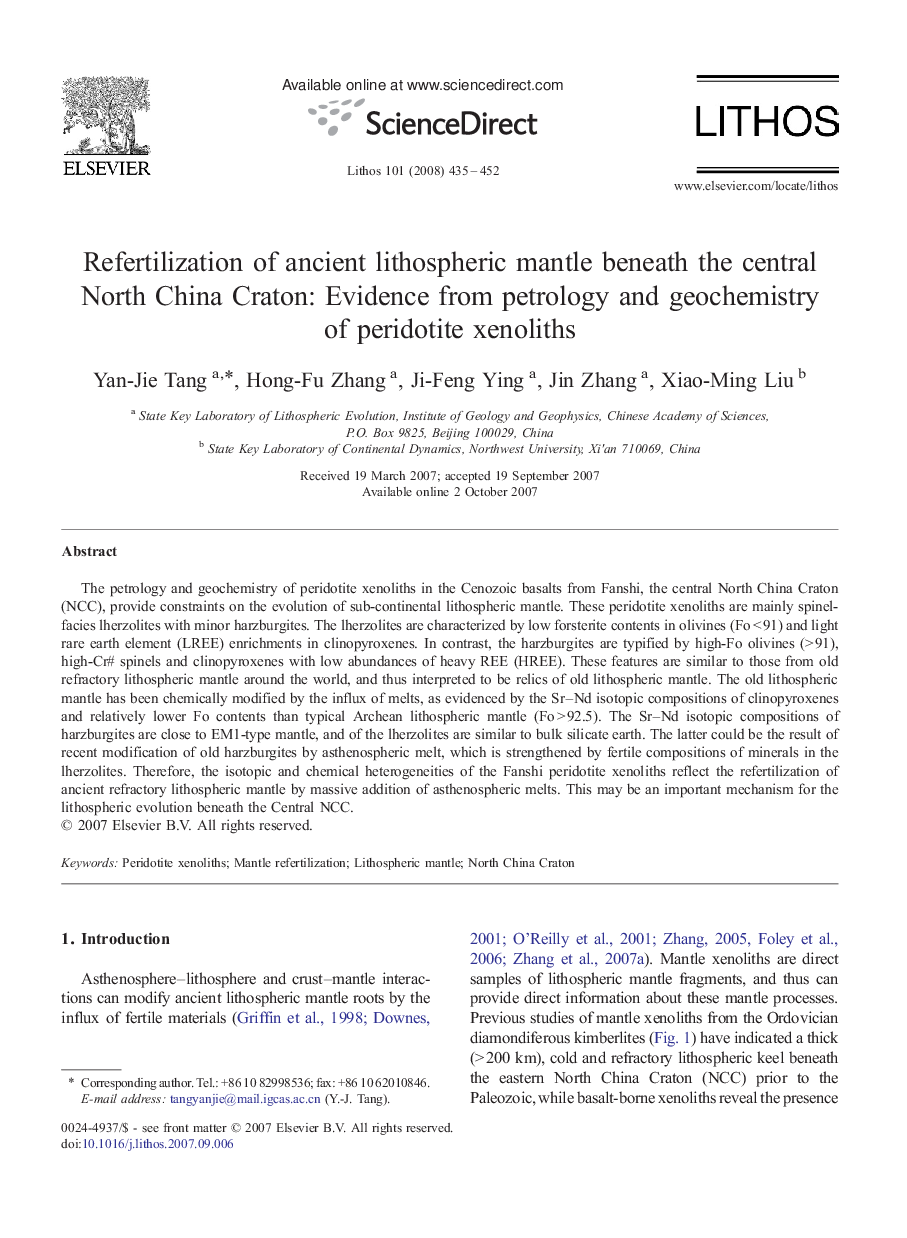| Article ID | Journal | Published Year | Pages | File Type |
|---|---|---|---|---|
| 4717638 | Lithos | 2008 | 18 Pages |
The petrology and geochemistry of peridotite xenoliths in the Cenozoic basalts from Fanshi, the central North China Craton (NCC), provide constraints on the evolution of sub-continental lithospheric mantle. These peridotite xenoliths are mainly spinel-facies lherzolites with minor harzburgites. The lherzolites are characterized by low forsterite contents in olivines (Fo < 91) and light rare earth element (LREE) enrichments in clinopyroxenes. In contrast, the harzburgites are typified by high-Fo olivines (> 91), high-Cr# spinels and clinopyroxenes with low abundances of heavy REE (HREE). These features are similar to those from old refractory lithospheric mantle around the world, and thus interpreted to be relics of old lithospheric mantle. The old lithospheric mantle has been chemically modified by the influx of melts, as evidenced by the Sr–Nd isotopic compositions of clinopyroxenes and relatively lower Fo contents than typical Archean lithospheric mantle (Fo > 92.5). The Sr–Nd isotopic compositions of harzburgites are close to EM1-type mantle, and of the lherzolites are similar to bulk silicate earth. The latter could be the result of recent modification of old harzburgites by asthenospheric melt, which is strengthened by fertile compositions of minerals in the lherzolites. Therefore, the isotopic and chemical heterogeneities of the Fanshi peridotite xenoliths reflect the refertilization of ancient refractory lithospheric mantle by massive addition of asthenospheric melts. This may be an important mechanism for the lithospheric evolution beneath the Central NCC.
